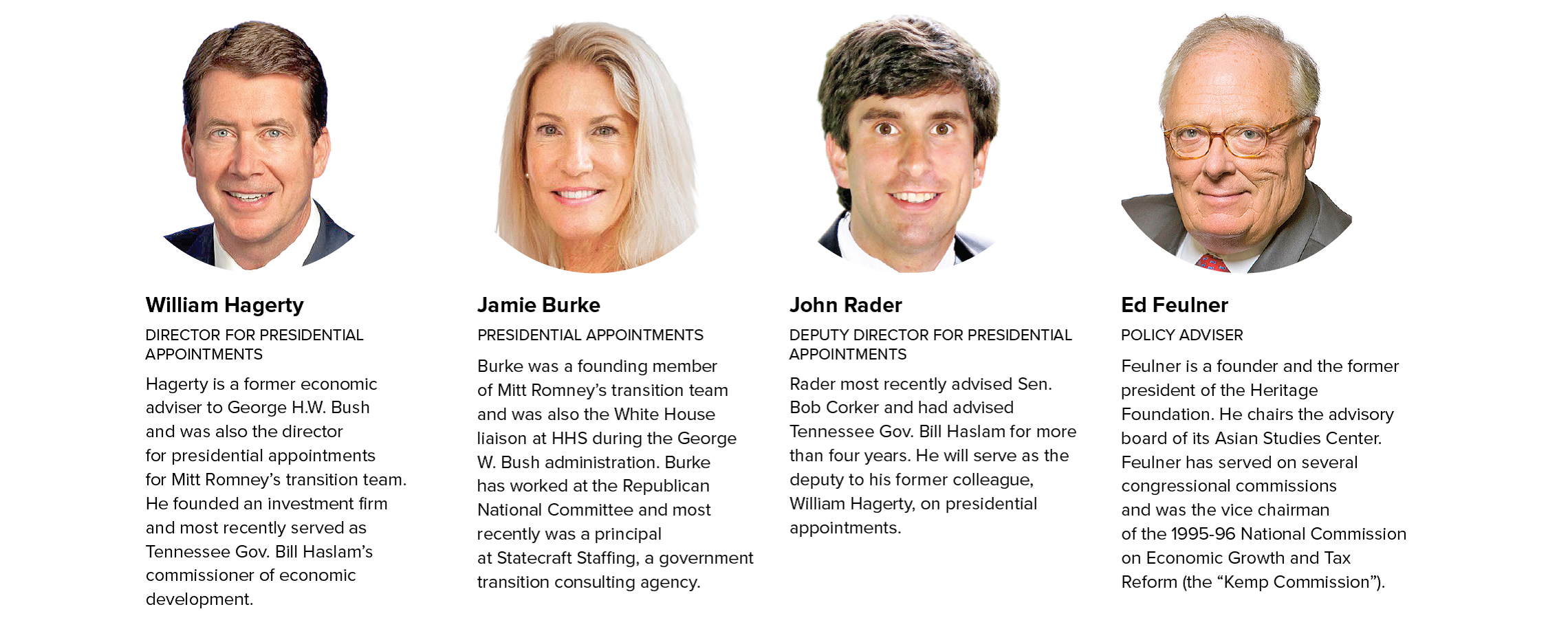Update: 11/11/16:
Politico: President-elect Donald Trump has shaken up his transition team just days after winning the White House, replacing New Jersey Gov. Chris Christie with Vice President-elect Mike Pence at the helm of the effort that will shape his administration when it begins in January, according to a source close to Trump.
While Christie has long been a high-profile surrogate and member of Trump’s inner circle, his viability as part of the team was thrown into question when two of his close allies were convicted on charges of fraud and conspiracy elated to the Bridgegate scandal.
The source said Christie “will still be around”- hardly a ringing endorsement – and that Sen. Jeff Session’s chief of staff, Rick Dearborn, will help run the transition effort, especially the day-to-day operations.
2017 PRESIDENTIAL TRANSITION CHECKLIST
Donald Trump’s transition team has added a number of policy and personnel experts over the past week and will likely continue adding many more in the weeks to come. Transition teams usually have more volunteers than paid staff members and number in the hundreds by Election Day.
Until then, both transition teams will focus on developing a policy agenda, identifying hires to fill a staff of about 4,000 in the executive branch and fundraising. So far, Trump’s transition team has added a number of experienced policy experts, former advisers and officials, and lobbyists, as well as a mix of both conservative and establishment Republicans to its roster. Trump’s transition team, as of Oct 1, 2016.
Transition teams focus on three big tasks.
- Fundraising: Of course, transition teams are in part funded by Congress. However, they still need to raise funds to cover all expenses. The Partnership for Public Service estimates that Clinton and Trump will each need to raise $4 million to $5 million to pay for pre-election and post-election expenses.
- Government Appointments: A new administration has the responsibility to fill roughly 4,000 politically appointed positions within the executive branch (about one-quarter of which will require Senate confirmation). Members of each transition team will vigorously vet and screen candidates to create shortlists of candidates for these positions.
Policy Preparation: Both candidates must produce a clear policy agenda that can be put into action on Day 1 in office. This process requires the transition teams to go through intensive research and deliver an actionable policy strategy. For the complete report by Politico, go here.





